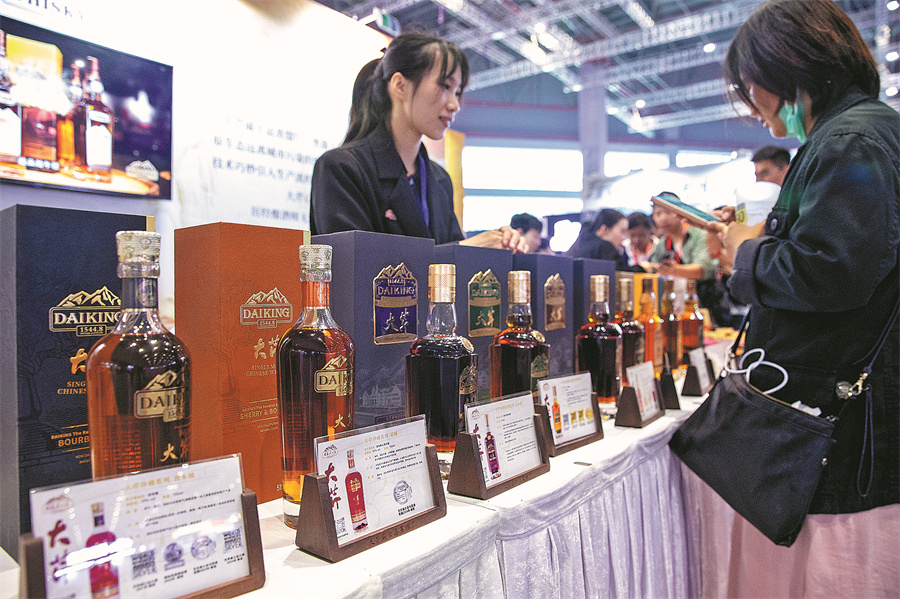Popularity of nation's maturing whisky industry uncorked
Distillers mushroom across the country, producing spirit with a local twist


Roll out the barrels
Innovation is also at the heart of Laizhou's approach. Beyond traditional bourbon and sherry casks, the distillery has pioneered the use of Chinese oak barrels. One example is the yellow wine cask, first seasoned with yellow wine for 18 months, then used to age whisky, imparting subtle rice and fermentation aromas to the spirit.
Laizhou has also experimented with Mongolian oak casks, sourced from northern China's Greater and Lesser Khingan Mountains. "Mongolian oak meets European whisky standards," Shen explains. "It adds a unique depth to the whisky, something entirely new to the global market."
Though the distillery's focus is firmly on whisky, environmental sustainability remains a priority. Laizhou has incorporated various green initiatives, including recycling hot water for reuse and capturing carbon dioxide emissions for use in their cocktail products. "We even repurpose our spent grain as animal feed for nearby farms," Shen adds.
In March, Laizhou introduced a new product line aimed at younger, cost-conscious consumers. The 100-milliliter bottles, priced at about 30 yuan, offer an affordable entry point into the world of whisky, making the spirit more accessible to a broader audience.
"We wanted to create something that fits easily into a pocket and into the lifestyle of younger consumers," Shen says.
Laizhou Distillery's commitment to innovation and quality has earned international recognition. At the 2025 Icons of Whisky China Awards, the distillery's visitor experience won "Visitor Attraction of the Year", and went on to earn the prestigious title of "Global Highly Commended" at the IOW Global Awards.
Whisky writer Chen Xiao was deeply impressed after visiting Laizhou Distillery's visitor center, describing it as thoughtfully divided to ensure that brewing equipment and natural landscapes coexist harmoniously.
Chen, who launched a whisky-focused media platform a decade ago, has witnessed China's whisky scene evolve from almost nonexistent to a vibrant industry with around 100 distilleries.
Over the years, he has continuously updated his "China Whisky Map", personally visiting many of the country's emerging distilleries. Beyond large-scale operations like Laizhou, Chen has observed some domestic distilleries pursuing a boutique, high-end product path.
"Some Chinese whisky products are actually not cheaper than imported ones," Chen said. "That's because many local distilleries have recently made heavy investments in building infrastructure, and some even import raw materials, leading to higher production costs."
Drawing parallels with Japan, Chen noted that Japanese whisky initially started by mimicking Scotch whisky, both in technique and flavor, before developing its own distinctive style over time.
"China's whisky industry is still in its early stages," he said. "It will take years before a unique Chinese whisky character emerges. But I believe we might evolve faster than Japan did — because Chinese producers are already showing boldness in innovation and have entered the market at a favorable time."
Modern technology is helping to accelerate this progress, Chen added. "With today's internet access and the rise of AI, it's much easier to learn distillation techniques. Even when purchasing equipment like stills, technical support often includes on-site training. This greatly speeds up development in China," he said.
Chen predicts that in the next five to 10 years, China's whisky market will see a variety of new offerings as distilleries' casks mature.
He is also confident about the increasing enthusiasm among domestic consumers for whisky. "I used to think whisky was only for older, successful professionals," he said. "But I've realized it's equally suited to young people — especially those with some disposable income and a growing interest in lifestyle pursuits."



































